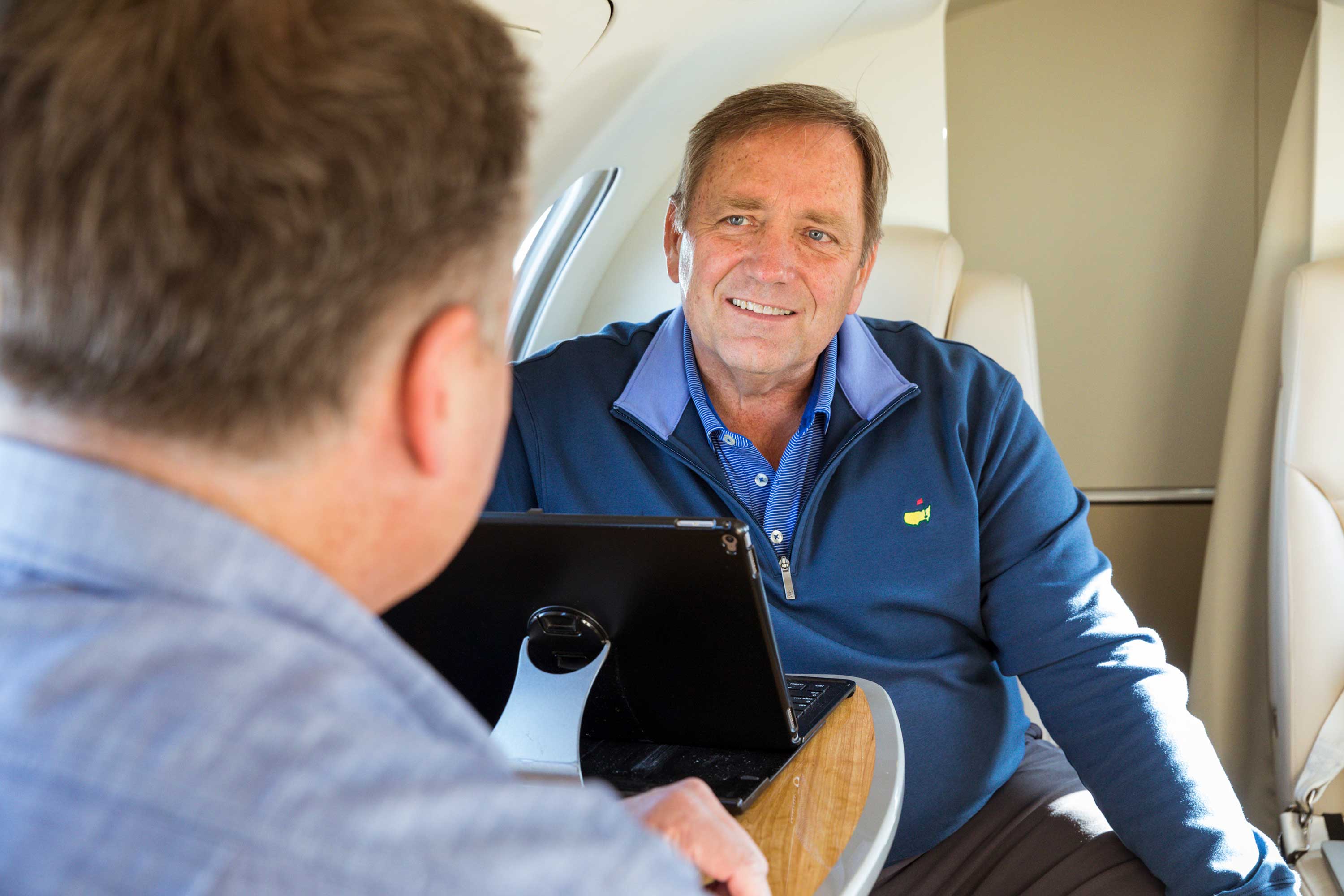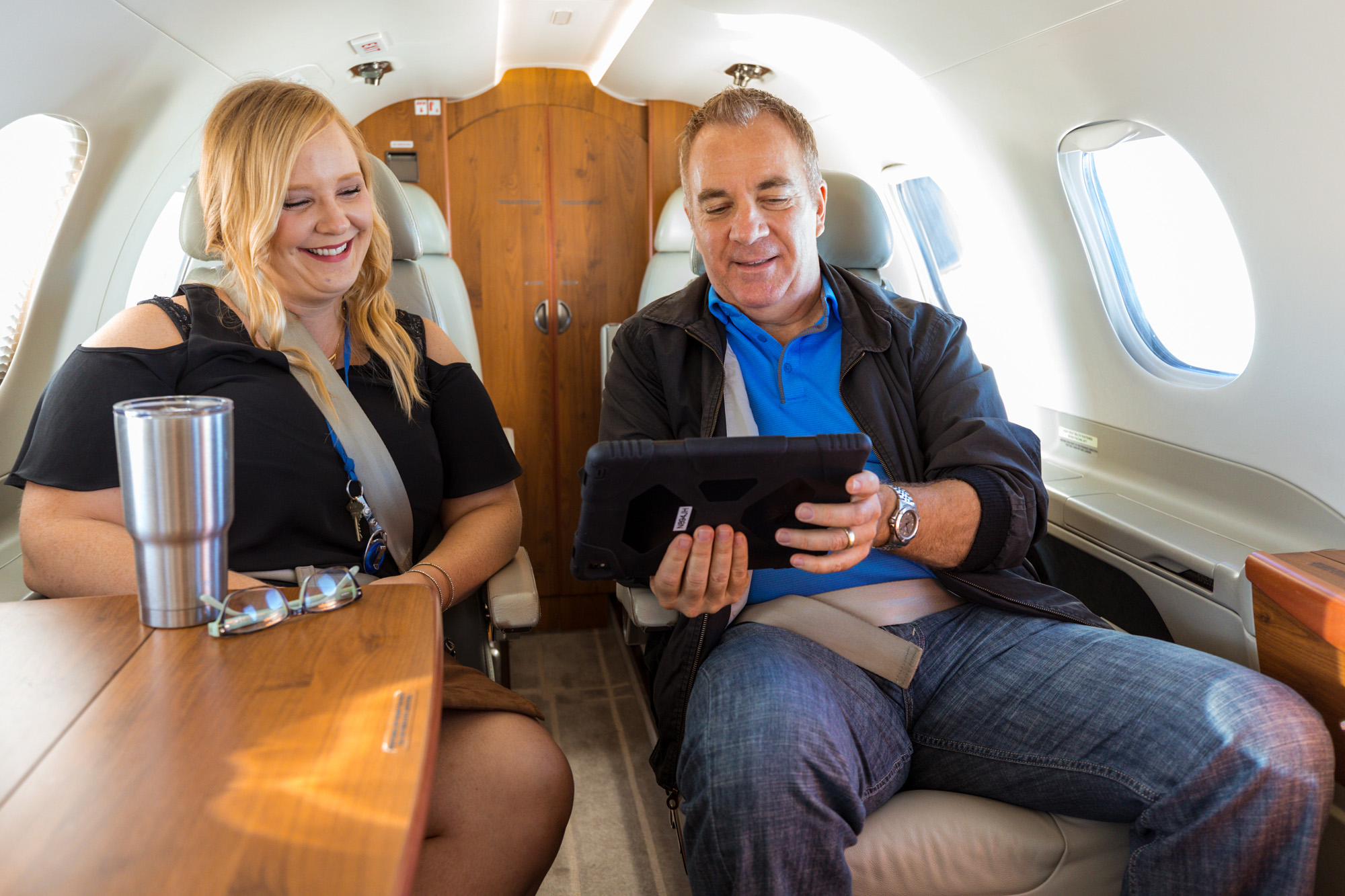

Nov. 12, 2018
Passengers demand the same level of service they receive on the ground, and for many companies, inflight connectivity has gone from optional to mandatory.
It’s a rare occurrence these days, but when it happens, most of us find it frustrating and even a bit unbelievable. You walk onto an airliner, strap yourself into your seat, turn on your tablet or laptop and wait to connect to the internet only to discover that on this particular flight, the carrier offers no WiFi.
Say what?
This isn’t a small matter. Studies show that in 25 percent of cases, the availability of WiFi – or the lack of it – can influence a custom-er’s ticket purchasing decision. Passengers these days expect connectivity.
Believe it or not, the same thing still sometimes happens in business aviation, where passengers board a business aircraft only to discover that there is no connectivity. But these occurrences are more the exception than the rule, as more business aircraft now are wired for internet and even VoIP telephone access, either through a satellite communications (satcom) service provider or an air-to-ground (A2G) network.
New aircraft entering the market generally come equipped for connectivity. Meanwhile, operators of older aircraft have, for the most part, outfitted their business aircraft to offer some kind of connectivity– unless the aircraft is so old that the return on investment for this kind of technology just doesn’t make sense, say aviation connectivity experts.
Business aircraft connectivity is now commonplace, as more and more passengers expect not only to be able to connect to the internet, but also to have user experiences that are similar to those they have in their homes or offices.
“The demand is steady, strong and even gaining in popularity, which is hard to believe,” said Steve Elofson, who works in aviation installation sales at Duncan Aviation’s Lincoln, NE, location.
“Gogo kicked it into high gear in the early 2000s with 664 Inmarsat connectivity, which was a dial-up speed. As the speed got greater and [service providers] came out with A2G networks that offered speeds similar to home use, that’s when demand started to increase. That was eight years ago, and it hasn’t let up since.”
As a maintenance, repair and overhaul provider, Duncan has installed hundreds of systems in business aircraft. Elofson said that from his perspective, most business aircraft – especially if they are used for charter – now are connected.
“There are some lower-value aircraft that are offered for charter that don’t have internet connec-tivity,” said Elofson. “But if it’s a higher-value operation, then it is expected.”
In fact, the real story concerning connectivity in business aviation isn’t that it’s gone from being viewed as a perk to a necessity, but that new advances are expanding connectivity availability to an increasing number of business aviation users. These services also are offering a wider range of options to customers at a variety of price points.
“There have been two significant changes since last year,” said Elofson “The [Ka-band] is very fast, very high bandwidth satellite-based connectivity that is [available] worldwide. And then Gogo came out with the next-generation A2G system, which is called L5. We’ve been developing [supplemental type certifications] for that product.” Speeds of 1 megabyte per second (mbs) just don’t cut it anymore, according to Elofson. “The L5 is 5 to 6 mbs, so, it’s much faster, and lots of our customers are asking to have the first-generation system removed for the next generation,” he said.
And that’s just one example. Satcom connectivity systems now are offering speeds that are much faster – in some cases up to 50 mbs – according to experts.

CHOOSING A SYSTEM
With all the technological advance-ments taking place in connectivity – including new and faster satellites and improved A2G networks – choosing the right equipment and services can be confusing. Here are some important things to keep in mind when choosing a connectivity solution that fits your aircraft and user needs.
Terrestrial connectivity communi-cations typically go through an A2G network. Terrestrial ground stations connect to an antenna that is placed on the aircraft’s lower fuselage to transmit and receive data. Signals are distributed in the aircraft using Wi-Fi access points.
In terms of satcom, there are three radio frequencies or “bands” that typically are used to communicate with satellites:
- L-band uses frequencies in the 1 to 2 GHz range
- Ku-band utilizes approximately 12 to 18 GHz
- Ka-band services uses the 26.5 to 40 GHz range
Higher frequencies provide more bandwidth, so Ka-band offers more bandwidth than Ku, which provides greater bandwidth than L-band.
A typical satellite-based system features:
- A satellite antenna installed on the exterior of the aircraft, with a radome to cover it
- Hardware that keeps the antenna pointed in the proper direction of the satellite
- An onboard server, which connects the service provider and passengers’ personal devices
- A router to establish a cabin network that provides cover-age within the cabin
It’s also important to remember the following:
- Higher bandwidth means more data can be transferred
- Higher frequency offers more bandwidth
- High signal-to-noise ratio is best
Latency, which generally is the amount of time between executing an online command and receiving a response – and vice versa – is another important consideration when evaluating connectivity systems, say the experts.
“It’s very confusing [for operators] trying to figure out which service is the right one,” said Lupita Wilson, principal market-ing manager of Rockwell Collins’ ARINCDirect, which offers a variety of business aviation services, including flight planning, flight deck communications, cabin communications, international trip services, fuel, and flight operations systems. A common question she hears is, “There are so many solutions right now, but how do I know what’s right for me?”
As always, it starts with deter-mining where you will be flying. Is the aircraft going to be operated just domestically? If so, then an A2G service that operates much like a cellular phone ground-based service is probably the right fit.
If the aircraft flies internationally, then a satcom system would be required, since A2G isn’t accessible on ocean-crossing flights. If you’re flying a combination of the two, then a combination of satcom and A2G system probably is best.
Other important questions include how passengers will be using the available connectivity. “Is it going to be for basic email, or streaming?” said Wilson.
ARINCDirect Cabin Connectivity services are designed for a range of users, including smaller flight departments, large corporate users or charter operators via Inmarsat SwiftBroadband, Iridium and Yonder. It also is a value-added reseller of Inmarsat’s JetConneX service, with global Ka-band connectivity at broadband speeds.
JetConneX delivers data at speeds of up to 15 mbs via the Global Xpress network of three geostationary Inmarsat satellites.


 International Business Aviation Council Ltd.
International Business Aviation Council Ltd.